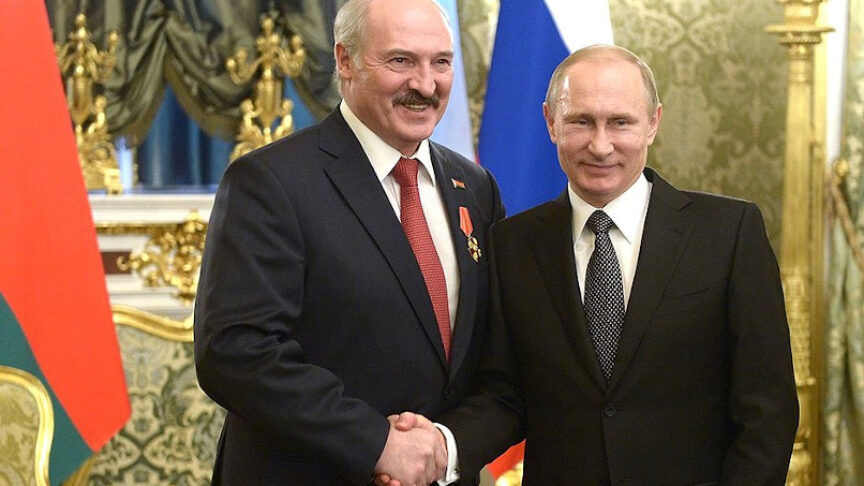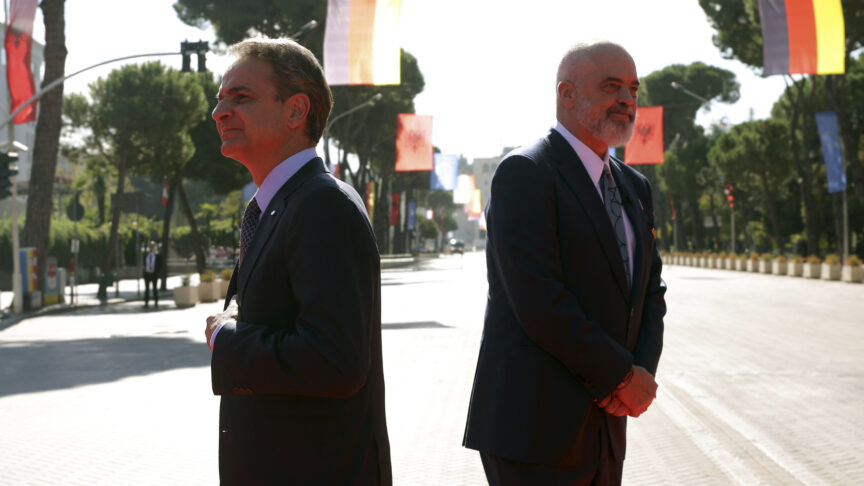Russia’s military manoeuvres at the Belarus border – a message to the West
The Kremlin knows that intervening militarily would lose it the goodwill of the Belarusian people. But it does not rule out a managed transition to a candidate of its choice.
The protest movement in Belarus was sparked by the rigging of the 9 August presidential election in favour of the incumbent president Alyaksandr Lukashenka. It has since grown into a national movement that includes both capital city and provinces, both intellectuals and workers from the state-owned enterprises and media outlets. Lukashenka’s regime initially reacted with extreme violence, deploying arbitrary police action, mass detentions, and torture against protesters. But on 14 August major parts of the police force declined to continue using force. With at least some of the domestic security forces unwilling to continue a brutal repression, and the president having lost the support of core constituencies, it is hard to see how the regime will last – unless a foreign power intervenes on its behalf.
So all eyes are on Moscow. Lukashenka has already called on Vladimir Putin to intervene, and has ordered Belarus’s best military units to move from the Russian to the Polish border in order to frame the protests as a form of NATO hybrid intervention. At the same time, there is currently a lot of military traffic on Russia’s side of the Belarusian border. The Russian armed forces have recently concluded manoeuvres south of Saint Petersburg, and preparatory exercises are taking place in southern Russian in the run-up to the Kavkaz 2020 drills. All this is a good smokescreen to move additional forces into the area. In 2016, Russia moved its 144th Motor Rifle Division close to the Belarusian border, which has now been reinforced by the 28th Motorised Brigade. Given that the loyalties of the Belarusian armed forces are still unclear at this moment, and the fact that Russia can likely read all the signals and communications of its close Collective Security Treaty Organisation (CSTO) ally, a military intervention is certainly possible. But is it likely?
The Russian media remains a far cry from the massive propaganda effort against “Kyiv fascists” and the “junta”
Even if Russia’s military is superior, the Belarusian army is in much better shape than the Ukrainian armed forces were in 2014 – so intervening could be a costly affair. On top of this, the Kremlin has learned from its mistakes in Ukraine in 2004 and 2014 that siding with a delegitimised president will earn Moscow the anger and distrust that that president held too. If it intervened, it would lose the Belarusian population as a whole and for good; the feelings of that population towards Russia are not currently overly negative.
Instead, Russia’s military manoeuvres are – for the time being – a show of force and a signal of intimidation. Firstly, of course to the West, to deter it from intervening. But equally importantly they are a signal to the Belarusian opposition to say that any post-revolutionary government would need to respect Moscow’s geopolitical red lines. These are that Belarus remain a close ally within the CSTO and the Eurasian Economic Union, but also that Russia’s channels of influence be left intact. This point may become controversial in the future, as Belarus’s security forces include the armed forces, the police forces, and the KGB (still its name). Reforming and lustrating at least the police force and the KGB, which were both involved heavily in the repression that followed the election, would almost certainly be on the agenda of a possible post-revolutionary government.
If it is not likely to invade, would the Kremlin support a change of government? Potentially. After all, it had no hesitation in backing some of the most notorious autocrats on the planet, from Nicolas Maduro in Venezuela to Bashar al-Assad in Syria. But Belarus is different to Russia, for many reasons. In this case, Belarus is so important for Russia that it will be taking especial care to ensure it gets the result it wants. It will currently be working out whether pumping resources into an unsustainable dictator whose own actions might push the opposition towards the West may not be worth it. Putin’s cautious response to Lukashenka’s plea for assistance suggests he may not ride to the rescue.
Moreover, the Kremlin has in the past allowed and even actively managed leadership transitions in nearby countries when it has been sure that the new leaders would respect Russia’s broad geopolitical interests. The 2018 revolution in Armenia is the best known example of this, but Russia also had to accept the public deposing of presidents in Abkhazia in 2014 and 2020. It accepted the 2011 election in Transnistria that propelled Yevgeny Shevchuk to power instead of its own hand-picked candidate. And Russia has on various occasions at least accepted, if not facilitated, power transitions in central Asia.
Once Moscow concludes that Lukashenka is an effective dead-end it could and would accept a leadership transition if it could structure a process that gives it as much control as possible. Russia maintains close contacts with some figures of the new opposition movement: Valery Tsapkala, who introduced Lukashenka to Russian political circles in the early 1990s and has fled to Moscow with his family; and Viktar Babaryka, who was favourite for the presidential race until he was blocked from standing and jailed, and who previously worked for Russia’s Gazprombank. So there are certainly factions in the Belarusian elite that have abandoned Lukashenka that the Kremlin can work with.
That said, the protest movement’s breadth and depth shows that it has spread far beyond the disenfranchised Belarusian elite the Kremlin is familiar with. And like many bottom-up protests the movement lacks organisational structures and clear representatives. Because the Kremlin is notoriously bad at understanding such movements – de facto expecting movements to be hierarchical and with a clear organisation – suspicion about a hidden or conspiratorial structure guiding them are never far from the surface. A show of force may well enable Russia to deter groups or individuals it does not want from participating in any political transition process.
In addition, activity has also increased very recently on the part of the Russian air-forces’ VIP transport fleet, which has been shuttling in and out of Minsk, suggesting that the Kremlin may at least be talking to different sides about the possibility of a transition process. Contrary to Lukashenka’s claims that Putin will assist with restoring order, the Kremlin has avoided committing itself either way and is keeping all options on the table. It would hardly rush this, as it wants to avoid the appearance of public protests ousting a president. The Kremlin would rather endorse some sort of transitional process that enables it to be seen to be in charge. If things go wrong for Moscow, it may still decide on a military intervention at a later stage – but that would certainly be the worst of all possible options for it, coming with the highest risks involved.
Intervention remains a distant prospect but, should it arrive, the Kremlin would also have to change the narrative on the events in Belarus in order to sell such an intervention to its domestic audience. Right after the election, the Russian state media had been critical of Lukashenka, the rigged election, and the crackdown. Lukashenka’s own lines are now slowly entering Russian media, but the whole effect is still a far cry from the massive propaganda effort against “Kyiv fascists” and the “junta” that prepared the ground for the 2014 military invasion of Ukraine. If, of course, the propaganda machine cranks into gear, this would be a sign that trouble is on the horizon.
On the political transition, the European Union would be well advised to listen to the Belarusian street movement’s voices and demands, and not insert an agenda of its own. External demands issued at the wrong time and in the wrong context may only strengthen Lukashenka in Moscow’s eyes. However, the problem in Minsk is that the protest movement at this point is unorganised and has no coherent political agenda other than calling for Lukashenka to step down. But an upfront promise that the EU would take no actions beyond meeting Belarusians’ own demands may be a first attempt to walk the careful line in supporting the protest movement but not giving the Russians an excuse to strike.
The European Council on Foreign Relations does not take collective positions. ECFR publications only represent the views of their individual authors.



